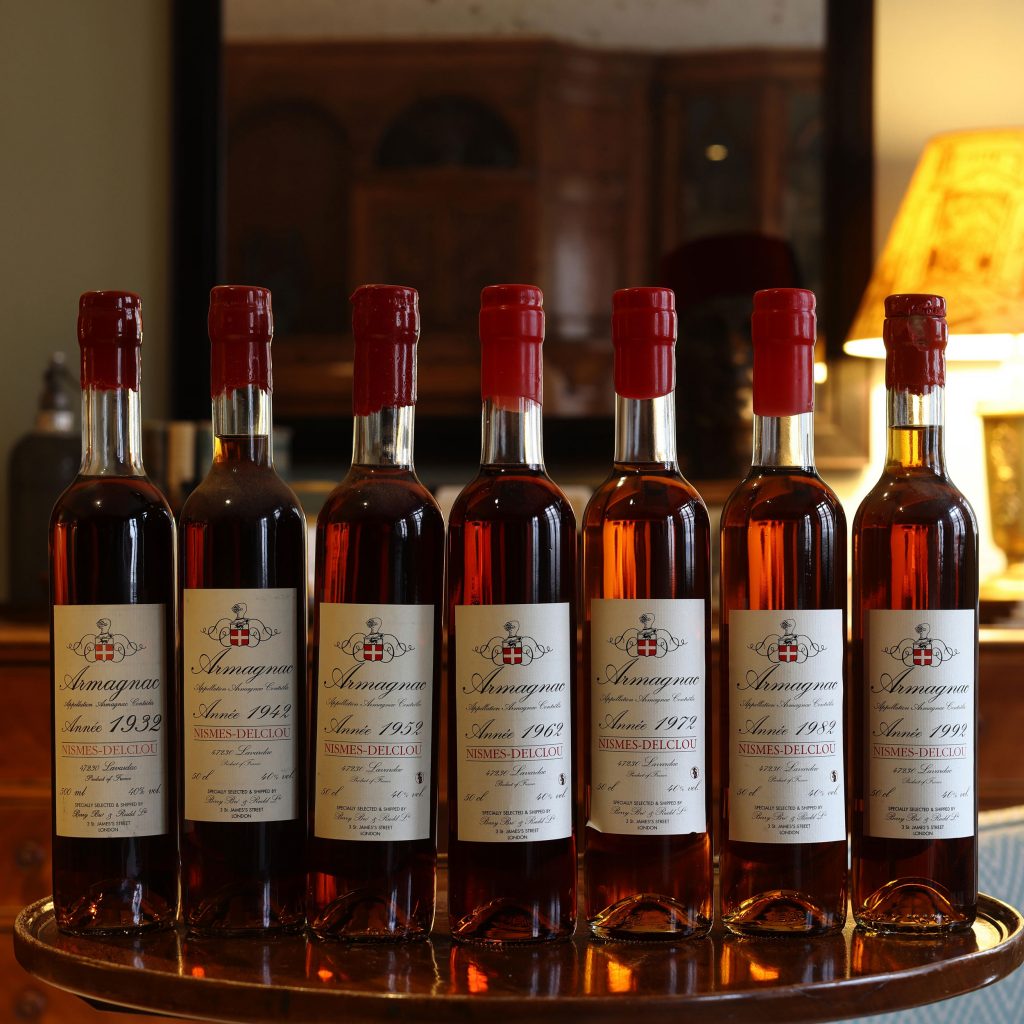Nismes-Delclou: the past, present and future of Armagnac
Author: Rob Whitehead

In our cellars, we hold a collection of vintages that span several centuries. On our blog, Spirits Buyer, Rob Whitehead, reflects on the special relationship Berry Bros. & Rudd shares with famed Armagnac producer Nismes-Delclou.
Florence Castarède is never short of time to share her brandy. Although she spends her days tirelessly running a globally respected Armagnac producer, when asked to raise a glass of Nismes-Delclou, time seems to melt away. The pride, passion, and joy she feels sharing her Armagnac are resoundingly clear to see.
In 1832, the Castarèdes were the very first registered Armagnac traders in France, although the family business dates back further – all the way back to an 18th century iteration under the older family name of Nismes-Delclou. Changing names throughout the centuries is a journey that we know all too well at Berry Bros. & Rudd – so, we choose to honour the Castarède forebears by using their ancient name.
A SPELLBINDING VISIT
When last I travelled to Armagnac (first via motorways, as far as they went, and then a lengthy and dwindling series of smaller roads) it was part relief and part joy to arrive at the family home, Château Maniban. This 17th century estate serves as a distillery, ageing cellar and home – all of it surrounded by 16 hectares of prime vineyards in the best part of the Bas Armagnac sub-region.
Storybook images of rural Gascony reveal themselves to be unerringly accurate. Bees seem to buzz slowly, warm southerly breezes caress nearby fields of sunflowers, local lizards pass by lazily. No filter or lens could be applied that would inspire haste: Ugni Blanc, Colombard, Baco and Folle Blanche grapes ripen sedately. Meals are eaten slowly – and cooked even more so; a proper due is given to the post-prandial needs of digestion. Fortunately, their world-class spirit assists with that.
DISTILLING AT A GLACIAL PACE
Old family businesses often find themselves becoming the custodians of their own history. Nowhere is this more keenly understood than at Nismes-Delclou, where myriad back-vintages rest untouched in the delightfully ramshackle cellars – the earliest being from the 19th century.
Each Armagnac spends its first half-century in oak – building complexity atop the characterful spirit that flows from the old-fashioned alembic still that’s employed in this region. Once the desired balance between oak and spirit is reached, the spirits are transferred into glass vessels of 20 to 50 litres, encased in wicker and stoppered with a wax seal. The exact moment when the venerable spirit must make this move is impossible to define – it varies cask to cask under the watchful nose of the Maître de Chai.
A WINDOW TO THE PAST
These dame-jeannes allow for infinitesimally gentle continued maturation, sometimes over an even longer period than the active oak-aging. This glacially paced second period of evolution (used also by their northern cousins in the Cognac region) seems to give rise to additional complexities whilst allowing the essence of the drink to live indefinitely.
Not being far from the Spanish border, summers in Gascony are generally warm. While grape ripeness is reasonably assured – especially with recent climate change – there are, of course, variations in potential from year to year. Whatever the weather afforded is picked in autumn and then distilled before maturation. This distillation usually takes place over a week or two in November, so the spirits are safely in their casks long before the coldest months.
Because this process covers the whole year, the production of Armagnac inspires rumination on its happenings, capturing something of all four seasons. We all have years in our personal, professional, family or national history that hold increased interest. Whether it be fond memories, commemorations, or a yearning to learn of an unknown or forgotten time – once the opportunity arises to explore – it can be deliciously irresistible.
THEN, NOW AND FOREVER
On my most recent visit, I marvelled in being able to drink my parents’, all four of my grandparents’ and two of my great-grandparents’ birth vintages. Most affectingly, I encountered the 1916 while considering my grandfather, who during that year was wounded at 17 years of age in the battlefields of the Somme.
In an ever more transient world, moments where one can at once consider past, present and future at are rare and fleeting. I feel it is one of my proudest duties as Spirits Buyer to provide a way for those precious moments to be discovered. Through our multi-generational relationship with Florence Castarède and her family, we will assuredly continue to do so. Then, now and forever.
Browse our complete selection of Nismes-Delclou here.


